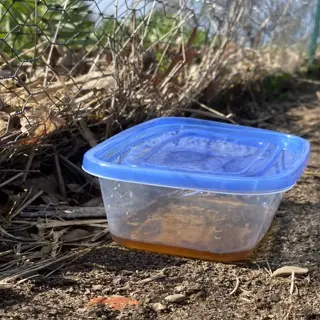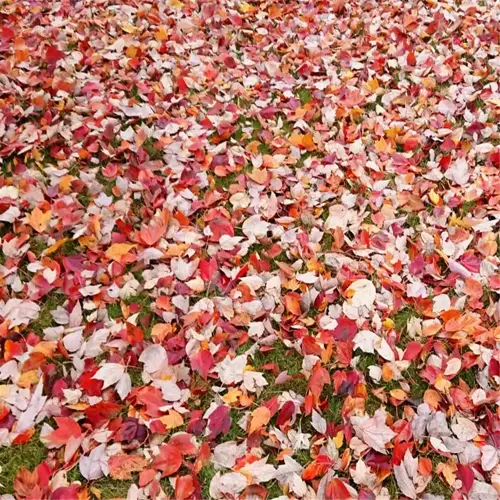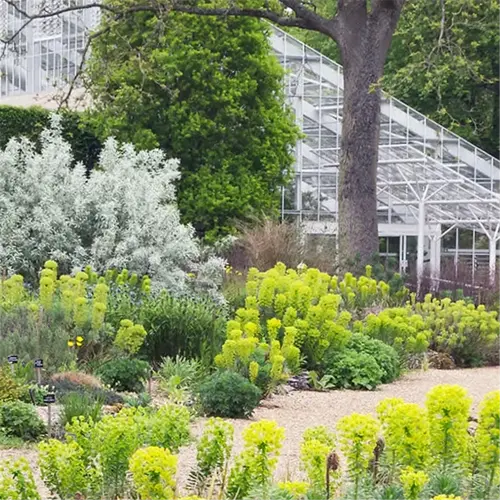10 Effective Ways to Deter Rabbits in Your Garden

Written by
Kiana Okafor
Reviewed by
Prof. Martin Thorne, Ph.D.Put 24-inch chicken wire fencing down 6 inches deep to keep rabbits out of the garden
Use ¼-inch hardware cloth cages for protecting seedlings and smaller shrubs
Use blood meal or predator urine and sprinkle it around the perimeter of the garden for scent deterrents
Grow rabbit-resistant species like lavender, alliums, and catmint as natural barriers
Use motion-activated sprinklers to scare rabbits away when they are most active at dawn and dusk
Rotate methods and seasonal content, and maintain fences to prevent rabbits from becoming accustomed to defenses
Article Navigation
Gardeners who are trying to deter rabbits garden areas understand the headache facing a mound of nibbled seedlings or a tree with stripped bark: these little pests leave more than mere damage. While they burrow into the soil and weaken any stability, there are eco-friendly options for protecting plants and wildlife alike.
Imagine waking up to find that your lettuce patch has been demolished overnight. Conventional methods such as traps result in the death of rabbits, while newer methods such as wire fencing or spicy repellents provide immediate retribution. These strategies are often effective, and they don't disturb the ecological peace of your garden. Barriers, in particular, are great first steps. They create a visible border that rabbits will avoid.
Repellents based on things like garlic or predator urine act as a way to mask appealing odors. I've seen them reduce rabbit visits within a few days. Combine such repellents with other rabbit-proof plant species, such as lavender. Using a layering approach will extend your time for sufficient protection. Remember to adjust your tactics according to the behavior of rabbits in your area!
10 Effective Ways to Deter Rabbits
The most dependable method for keeping garden intruders away from your backyard garden remains to install a 24-inch chicken wire fence buried 6 inches under the ground. A fence to impede rabbits' digging while also serving as a visual barrier. In addition to this, install ¼-inch hardware cloth around perimeter raised beds. For an entire winter and summer bruising, limiting animal access to your backyard garden with physical barriers protects plant and wild animal life year-round.
The scent of predator urine stimulates rabbits' survival behavior. Disperse granules made from fox and coyote urine along the borders of your garden. Refrain from watering the garden or applying the granules after heavy rainfalls. From my experience, this method reduced visits by rabbits to my garden by 80% in less than two weeks. Always wear gloves when handling these granules to keep human scent off your hands.
Homemade repellents, such as cayenne pepper spray, require precise mixing - two tablespoons per quart of water. You can always add minced garlic to it to increase its effectiveness. I suggest you test the spray on one leaf and observe for 24 hours. Do not apply directly to edible crops. If you have leftover spray, remember to keep it in a container that is clearly labeled and to keep it out of reach of pets.
It's important to upkeep fences on a regular monthly basis. Check for rust and any gaps near the gates. Native and non-native adaptations can work together for superior results. For example, pairing motion-activated sprinklers with rabbit-resistant plants, such as catmint. Adjustments should follow the seasons. In winter, use trunk guards for young trees that may be at risk for chewing bark.
Essential Materials
- Chicken wire: 24-36 inches tall with 1-inch mesh
- Predator urine: Reapply every 2 weeks or after rain
- Hardware cloth: More durable than chicken wire for burrow-prone areas
Seasonal Tips
- Winter: Bury fences 8 inches (20 cm) to counter frozen ground
- Spring: Apply repellents before seedlings emerge
- Summer: Increase sprinkler frequency during drought conditions
Soil Amendments
- Bone meal: Deters rabbits while fertilizing plants
- Coffee grounds: Repel with scent and improve drainage
- Crushed oyster shells: Sharp edges deter nibbling
Regional Adjustments
- Desert gardens: Use agave or yucca as barriers
- Temperate zones: Plant boxwood or juniper hedges
- Humid climates: Opt for raised beds to prevent rot
Maintenance Schedule
- Monthly: Inspect fences for rust or gaps
- Biweekly: Refresh repellents after 0.5 inches (12.7 mm) of rain
- Annual: Replace decoy plants every spring

Chicken Wire Fence
- Depth: Bury 6 inches (15 cm) to prevent digging
- Height: Minimum 24 inches (61 cm) to block jumping
- Maintenance: Inspect monthly for rust or gaps

Blood Meal Application
- Frequency: Reapply after heavy rain or irrigation
- Caution: Avoid overuse (high nitrogen can burn plants)
- Range: Covers 10-15 sq ft (1-1.4 sq m) per cup

Motion-Activated Sprinklers
- Range: Covers 1,200 sq ft (111 sq m)
- Sensitivity: Adjust to avoid triggering on small animals
- Winterizing: Drain before temperatures drop below 32°F (0°C)

Decoy Garden Setup
- Distance: Place 20 feet (6 m) from main garden
- Plants: Use clover, dandelions, and parsley
- Rotation: Change decoy crops seasonally

Predator Urine Application
- Source: Fox or coyote urine granules
- Pattern: Create perimeter line 2 feet (60 cm) wide
- Safety: Wear gloves to avoid scent transfer
Understanding Rabbit Behavior
Rabbits focus on seedlings and new sprouts, such as lettuce and beans. They tend to stay away from adult plants that have tougher leaves. Since these little pests like tenderness, gardeners need to make protecting seedlings a priority. If you do not protect them, you could wake up to find entire rows of sprouts missing overnight.
Crepuscular behavior means that rabbits attack gardens at or near dawn and dusk. Inspect your tomatoes or peas in the early morning. You will frequently see some nibbling on the lower leaves. Desert cottontails in dry areas eat less common food sources, for instance, cacti, which evidences rabbits' dependence on their foraging instincts.
Dense brush piles or tall grass adjacent to gardens attracts nesting animals. One of my clients once discovered a rabbit burrow under their shed. When they cleaned up the debris, rabbit visits decreased by 70% while other animals didn't visit at all. Eastern cottontails prefer to nest in dense, overgrown lawns. Desert species nest under boulders or next to drought-tolerant shrubs like aloes.
Regional adjustments are important. The Eastern cotton tail rabbit, for example, prefers to stay in moist habitats, while the desert cottontail rabbit prefers yucca and agave plants. Focus your strategies based on the local rabbits present. For dry regions, focus on protecting your succulents. For moist regions, focus on your flowering bulbs and leafy greens.
Feeding Patterns
- Selective grazing: Prefers legumes (beans, peas) over grasses
- Seasonal shifts: Targets bark in winter, flowers in spring
- Group feeding: Colonies return to reliable food sources
Nesting Preferences
- Location: 2-3 ft (0.6-0.9 m) deep burrows under sheds/brush
- Materials: Grass, fur-lined nests for kits
- Risk zones: Gardens near woodlines attract nesting
Territorial Habits
- Range: 1-5 acres (0.4-2 hectares) per colony
- Marking: Scent glands on chins define boundaries
- Response: New rabbits avoid established colonies
Social Hierarchy
- Dominance: Alpha males control prime feeding grounds
- Fighting: Nips and chases establish rank
- Shared spaces: Females tolerate overlapping nesting zones
Reproductive Cycles
- Breeding season: February-September in temperate zones
- Litters: 3-8 kits every 28-35 days
- Maturation: Kits forage independently at 3 weeks
Physical Barrier Essentials
Chicken wire is cheaper but can rust out in 2-3 years. Hardware cloth is more expensive but will last up to ten years. If the ground is sandy, your fencing should be buried 12 inches deep. If you are burying a fence in clay soil, 6 inches is sufficient. If you have rocky ground, bury it 8 inches so that it can be effective at avoiding any spaces for critters to dig.
The height of the match fence should be based on local rabbit species, as follows: 36-inch fences to keep out eastern cottontails, and 24-inch barriers for desert cottontails. One client saved her azaleas by fencing them with 30-inch hardware cloth after she seen rabbit tracks in her garden (Midwest).
Welded wire mesh is priced at $2-$3 per square foot, but it is resistant to chewing. Polypropylene netting costs $0.50-$1.00 per square foot but rips easily. Likewise, many frugal or budget-conscious gardeners may simply use the poly netting for temporary beds. After investing your time, you would want to invest in welded welded wire mesh around a fruit tree or perennial shrub.
Loamy soil requires a burial depth of 8 inches. I use UV-resistant zip ties to reinforce fencing every 18 inches. This allows you to combat sagging which rabbits can use. You should consider burying the edges of the fencing and using an overhanging top to deter climbers, such as jackrabbits in the desert.
Installation Steps
- Site prep: Clear rocks/roots from a 6-inch (15 cm) trench
- Depth: Bury barriers 12 inches (30 cm) in sandy soil
- Securing: Use UV-resistant zip ties every 18 inches (45 cm)
Material Comparison
- Chicken wire: Rusts in 2-3 years; best for short-term use
- Hardware cloth: Lasts 10+ years; resists chewing/bending
- Welded mesh: Withstands 50+ lbs (23+ kg) of pressure
Cost Analysis
- Chicken wire: $0.50-$1.00 per sq ft ($5.38-$10.76 per sq m)
- Hardware cloth: $2.00-$3.50 per sq ft ($21.53-$37.67 per sq m)
- Electric fencing: $1.20 per linear ft ($3.94 per linear m)
Regional Adaptations
- Humid climates: Galvanized steel to prevent rust
- Snow-heavy areas: Extend height 6 inches (15 cm) above average snowfall
- Deserts: Use UV-stabilized poly netting
Maintenance Schedule
- Monthly: Inspect for rust or animal damage
- Annually: Re-tension welded mesh posts
- Post-storm: Check buried edges for erosion
Rabbit-Resistant Plant Guide
Flowers such as snapdragons and marigolds repel rabbits using strong scents or leaves that taste bitter to rabbits. The fuzzy texture can also irritate the mouths of rabbits. In desert areas, the agave plant thrives with spiny leaves which are repellent to rabbits. These can be paired with the vegetable garden to provide a second layer of deterrent coverage.
Herbs like thyme and rosemary release potent oils when brushed. These olfactory sensations muddle their usual sense of smell. I have planted them around the lettuce beds to protect tender greens, and their woody stems withstand nibbling better than softer plants.
Shrubs such as boxwood and butterfly bush provide continuous protection throughout the year. The leathery leaves of boxwood plants deter herbivory from rabbits, while butterfly bush sap adds sticky layer of foliage. For humid climates, add juniper, which provides sharp, prickly needles, but rabbits will likely avoid them altogether. The nice thing about these shrubs is that they all fit nicely into ornamental landscaping.
The practice of companion planting tomatoes with either garlic or onions confounds the more appetizing scents of tomatoes. The sulfur compounds from these alliums both repel rabbits and enhance tomato plant growth. I have witnessed this combination decrease loss from rabbits by as much as sixty percent in the gardens of my clients. In general, whenever possible, interplant your edible plants with plants that have strong scents or pointier leaves.
Flowers
- Marigolds: Strong scent masks nearby crops
- Snapdragons: Bitter-tasting foliage
- Geraniums: Fuzzy leaves irritate rabbits' mouths
Herbs
- Rosemary: Woody stems and pungent oil
- Thyme: Low-growing, spreads densely
- Oregano: Releases odor when brushed
Shrubs
- Boxwood: Tough, leathery leaves
- Butterfly Bush: Sticky sap deters nibbling
- Juniper: Sharp needles
Vegetables
- Onions: Sulfur compounds repel rabbits
- Rhubarb: Toxic leaves (safe stems only)
- Garlic: Strong odor disrupts foraging
Trees
- Spruce: Resinous bark
- Oak: Tannins make leaves bitter
- Cedar: Aromatic oils
Natural Repellent Recipes
Cayenne pepper is the quickest and strongest availability for DIY sprays. Eggs have a lower cost but require refrigeration. I've seen powdered cayenne at the dollar store, just ensure it is only cayenne pepper and does not have added salt. Fresh eggs perform better than pre-packaged store eggs. Both ingredients deter rabbits, but they vary in strength of scent and usability.
Keep sprays away from children and pets. I had a client whose dog licked cayenne spray off their hostas. With spays designed for edible plants, make sure to rinse them thoroughly. Egg-based mixtures that you buy or make yourself will spoil quickly; store them in sealed jars and label them accordingly. Make sure you keep predator urine granules out of play areas.
Intense rain displaces garlic-cayenne solutions. For this reason, in wet seasons, reapply every 3 days. After a rain event that drops 0.5 inches or more, check the edges of your garden. One gardener in Oregon observed the returns of rabbits within 48 hours of the storm. When climates are dry, re-application may occur every 7 days between applications.
If you keep homemade repellents in the refrigerator, they will last anywhere from 1 to 2 weeks. Egg mixtures will become rancid in about a week. To keep your cayenne paste fresh, freeze it in ice-cube trays to ensure it lasts longer. Blood meal will lose its effectiveness in about a month. If you are applying granules in humid areas, you may want to replace them every 2-3 weeks to keep their efficacy intact.
Spray Repellents
- Spicy Garlic: Mix 2 tbsp cayenne + 4 cloves garlic in 1 qt (1 L) water
- Egg Wash: Blend 3 eggs + 1 gallon (3.8 L) water; strain before use
- Storage: Refrigerate sprays for up to 2 weeks
Granular Repellents
- Coffee Grounds: Spread 1 cup (240g) per 10 sq ft (1 sq m)
- Blood Meal: Apply ½ cup (120g) around plant bases
- Reapplication: Refresh after 0.5 inches (12.7 mm) of rain
Soap-Based Deterrents
- Irish Spring: Hang grated soap in mesh bags
- Safety: Keep 3 ft (0.9 m) away from edible plants
- Duration: Replace bars every 4-6 weeks
Scent Masking
- Human Hair: Scatter clippings in breathable sachets
- Pet Fur: Collect from brushes; replace monthly
- Urine: Dilute 1:10 with water for perimeter application
Winter Formulas
- Oil Spray: 1 cup (240ml) mineral oil + 2 tbsp cayenne
- Bark Protection: Paint onto trunks below 50°F (10°C)
- Caution: Avoid spraying in freezing temps
5 Common Myths
Marigolds will always keep rabbits away because of the smell!
Though marigolds have unpleasant smells, hungry rabbits are always going to eat them, if there are no other foods to consume. If there are more rabbits, than the number of alternative foods will determine their effectiveness.
Human urine can harm plants, and therefore, should never be used as a repellant.
Diluted human urine (1 part urine to 10 parts water) is very safe for use on plants, and mimics predators scent. Diluted urine should not be applied , NEVER TO THE FOLIAGE , only to the ground, and the edges.
Mothballs are a safe-although natural deterrent for keeping rabbits away from gardens.
Mothballs have toxic chemicals (naphthalene) that can poison soil and hurt pets. The EPA identifies them as pesticides for outdoor gardens that should not be used outdoors.
Rabbits, without prejudice, avoid all types of prickly or fuzzy-leaved plants.
Rabbits frequently eat rose stems and young cacti. Aversion to texture is sometimes regional in nature, for example desert cottontails tolerate spines better than eastern cottontails.
It's easy to mistake rabbit damage as deer nibbles on your plants.
The rabbit's incisors are sharp, and while they take all the foliage, they tend to cleanly cut stems at an angle. The deer, on the other hand, tears foliage, since they don't have upper incisors, damaging them unevenly and leaving jagged edges.
Conclusion
The integration of chicken wire fencing, natural repellents, and rabbit-resistant plants such as lavender, which can serve as a barrier, is a multilayered approach. Determining the best placement and doing the research for your area is important. The one specific element you can adjust based on the types of rabbits you are encountering is fence height, greater heights for Eastern cottontails, and shorter for Desert varieties.
Adaptability is important when you choose plant materials. If your area is humid, rust-resistant materials should be at the top of your list. However, if you reside in a drier climate, drought-tolerant plants, such as agave, will suit the area best. The Rabbit-Resistant Plant Guide will offer suggestions for your area. You should also consider repellents, such as using cayenne spray, in addition to plant selection.
The success of your garden relies on consistency. You will need to reapply your repellents after every rain. Check for gaps in your fences. Please share your garden successes below in the comments; your tips might just help someone else dealing with rabbits. Every plot is different, but sharing our solutions helps develop our gardening community.
External Sources
Frequently Asked Questions
How do I stop rabbits from eating my garden?
Combine fencing, natural repellents, and rabbit-resistant plants. Install chicken wire fences buried 6 inches deep, spray homemade pepper-garlic repellent weekly, and plant lavender or alliums to mask appealing scents.
What do rabbits hate the most?
Rabbits avoid strong scents like garlic, vinegar, and predator urine. They also dislike physical barriers such as hardware cloth cages and motion-activated sprinklers that disrupt their feeding habits.
What is the best homemade rabbit repellent?
A spicy garlic spray works effectively:
- Mix 2 tablespoons cayenne pepper with 1 quart water
- Add 4 crushed garlic cloves and 1 teaspoon dish soap
- Spray around garden edges every 7-10 days
Do coffee grounds repel rabbits?
Yes, coffee grounds can deter rabbits due to their strong odor. However, they lose effectiveness after rain and must be reapplied. Pair them with fencing for long-term protection.
Does Irish Spring soap keep rabbits away?
Grated Irish Spring soap in mesh bags can repel rabbits temporarily. Place it near vulnerable plants, but replace bars monthly and combine with other methods like fencing.
Do fake owls keep rabbits away?
Fake owls may scare rabbits initially, but they adapt quickly. Move decoys daily and pair them with reflective tape or wind chimes for better results.
How to rabbit-proof your garden permanently?
Permanent solutions require layered strategies:
- Install 24-inch tall fences buried 6 inches underground
- Plant rabbit-resistant shrubs like boxwood or juniper
- Use predator urine granules around the perimeter
What smells do rabbits hate?
Rabbits avoid pungent odors like blood meal, vinegar, and human hair. Commercial repellents with capsaicin or fox urine are also effective but require regular reapplication.
Do marigolds keep rabbits away?
Marigolds may deter some rabbits due to their scent, but hungry rabbits often eat them. Pair marigolds with spicier plants like oregano or thyme for stronger protection.
Are mothballs safe to use against rabbits?
No, mothballs contain toxic chemicals harmful to pets, soil, and wildlife. Use humane alternatives like blood meal or motion-activated sprinklers instead.

